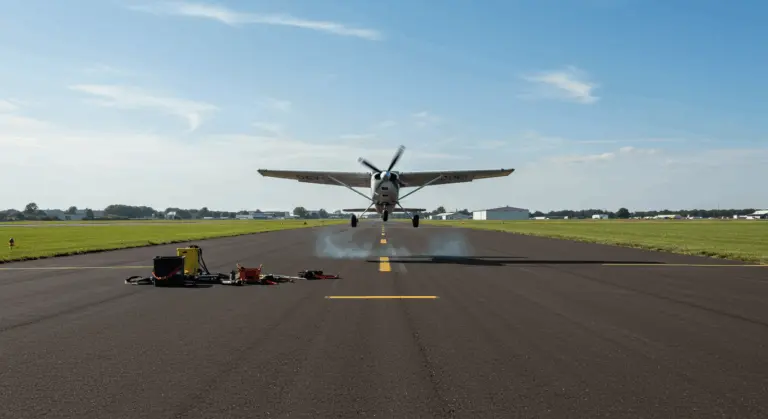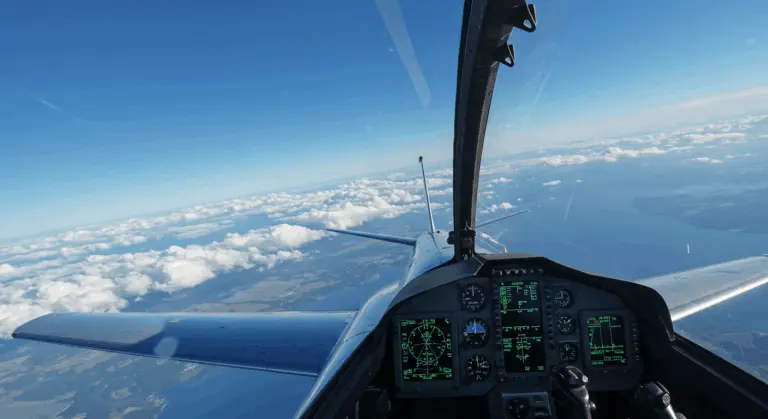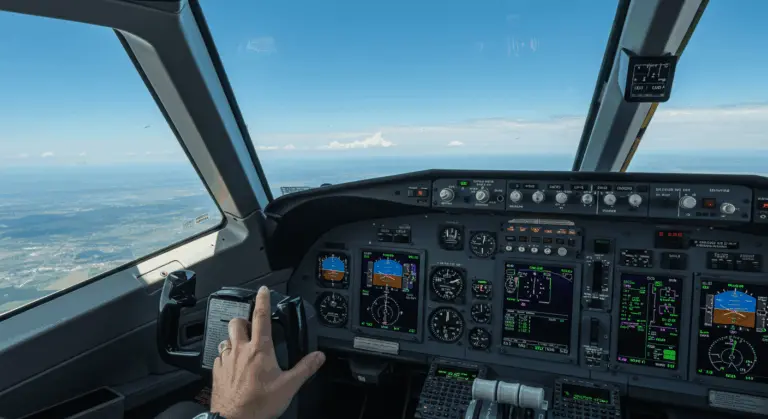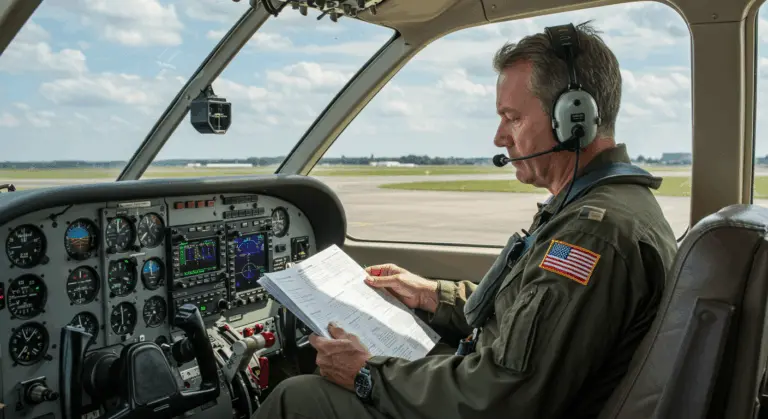Understanding Dihedral: Definition, Properties, and Applications
What is Dihedral? – Definition and Overview
Dihedral represents a captivating geometric concept—the angle formed where two planes intersect—with profound applications spanning mathematics, aviation, and chemistry.
Within mathematical frameworks, a dihedral angle quantifies the inclination between two planes. This fundamental concept forms the foundation for describing spatial relationships in three-dimensional geometry.
Aviation takes a more specialized approach: here, dihedral describes the upward sweep of an aircraft’s wings from the horizontal axis—a critical design element that governs stability and handling characteristics.
From sleek aircraft silhouettes to intricate molecular architectures, dihedral principles weave through diverse fields. This broad applicability makes it one of geometry’s most useful and relevant concepts.
Dihedral Angle vs. Dihedral Effect – Key Differences
Though aviation professionals often blur the distinction, the dihedral angle and dihedral effect represent distinct phenomena. The dihedral angle constitutes a tangible design feature—the measurable upward can’t of an aircraft’s wings relative to the horizontal plane.
Conversely, the dihedral effect emerges as an aerodynamic phenomenon: the aircraft’s inherent tendency to self-correct during sideslips. When one wing drops lower, it encounters a steeper angle of attack, generating additional lift that naturally rolls the aircraft back toward level flight.
Positive dihedral angles bolster lateral stability, creating aircraft that resist unwanted rolling motions. Negative angles—termed cathedral—sacrifice this stability to unlock enhanced maneuverability.
The dihedral effect can also be influenced by other design features, including:
-
Wing sweep
-
Vertical center of gravity position
-
Fuselage shape
This difference matters greatly to aircraft designers balancing the classic trade-off between stability and agility. Commercial airliners embrace pronounced dihedral for passenger comfort and predictable handling, while fighter jets frequently adopt cathedral configurations to maximize combat responsiveness.
Applications of Dihedral Angle in Aeronautics
Within aeronautical engineering, the dihedral angle goes beyond simple stability concerns, serving multiple practical functions that shape aircraft design philosophy.
One critical application involves ensuring adequate ground clearance. Wing-mounted engines and external stores require sufficient separation from runway surfaces during takeoff and landing operations—a problem neatly solved by strategic dihedral implementation.
Contemporary aircraft use more advanced techniques: variable dihedral along the wingspan, complex interactions with wing sweep angles, and hybrid configurations that deliver precisely tailored flight characteristics.
Measurement of Dihedral Angles – How It’s Done
Measuring dihedral angles requires specialized methods, each refined to deliver the precision required for its particular application.
Geometric calculations rely on vector mathematics—determining normal vectors for each plane, then applying dot product formulas to extract the angular relationship.
Materials scientists employ optical and electron microscopy techniques, enabling direct measurement of angles where crystal grains intersect within physical specimens.
Complex three-dimensional structures often defy direct measurement approaches. Statistical methods become essential here, calculating effective dihedral angles from multiple cross-sectional perspectives.
In aeronautics, engineers measure wing dihedral using specialized tools and technology to ensure it meets design specifications:
-
Digital inclinometers and laser alignment systems for direct measurement on the wing surface.
-
Computer-aided design (CAD) and 3D scanning to verify angles during manufacturing and maintenance.
Dihedral vs. Cathedral Wings – Understanding the Differences
Dihedral and cathedral represent opposing wing philosophies, each carefully selected to achieve distinct flight characteristics that serve specific operational requirements.
Dihedral wings sweep upward from the fuselage centerline—a positive angular configuration. Cathedral wings do precisely the opposite, angling downward in negative orientation.
This decision reflects aviation’s basic trade-off: dihedral prioritizes stability (perfect for commercial airliners), while cathedral maximizes maneuverability (essential for fighter aircraft).
Dihedral in Chemistry – Molecular Implications
Chemistry interprets dihedral angles as the spatial relationship between two chemical bonds separated by an intermediate bond. This measurement plays a key role in determining molecular geometry, stability, and reactive behavior.
Chemists scrutinize these angles to decode atomic spatial arrangements, particularly around rotatable single bonds. Consider ethane: its dihedral angle determines whether the molecule adopts a staggered or eclipsed conformation—a distinction with significant energetic implications.
Protein biochemistry relies heavily on backbone dihedral angles, specifically phi and psi values, which dictate three-dimensional structure. These angles determine whether proteins form alpha-helices, beta-sheets, or other secondary structures. The Ramachandra plot elegantly visualizes these relationships, mapping stable conformational territories.
Computational chemists use dihedral angle calculations to predict stable molecular conformations and energy landscapes. This reveals rotational barriers and illuminates molecular flexibility—critical insights for understanding chemical behavior.
Drug design demonstrates how important dihedral angles are in practice. A pharmaceutical compound’s bioactivity often hinges on achieving specific conformations for optimal receptor binding. Medicinal chemists strategically manipulate these angles to enhance both efficacy and selectivity.
Impact of Dihedral on Aircraft Stability
Dihedral angle forms the foundation of aircraft lateral stability, with positive angles—upward-angled wings—generating an inherent self-correcting tendency that pilots rely upon.
This stability emerges through the dihedral effect: when an aircraft enters a sideslip, the lower wing encounters an increased angle of attack. This generates additional lift, creating a rolling moment that automatically guides the aircraft back to level flight.
Larger dihedral angles amplify stability, yet designers must carefully balance this against maneuverability requirements. Excessive stability can render an aircraft sluggish and unresponsive to pilot inputs.
The amount of dihedral is tailored to the aircraft’s purpose:
-
Airliners and training aircraft use moderate dihedral for high stability and predictable handling.
-
Aerobatic and fighter aircraft use minimal dihedral or even cathedral (downward angle) to maximize maneuverability.
-
Some military jets use complex geometries like variable dihedral to optimize performance across different flight regimes.
Dihedral Angle in Kites – Design and Function
Kite design embraces dihedral principles through the characteristic upward ‘V’ configuration of flying surfaces, creating the same self-righting tendency that benefits aircraft.
Designers typically employ angles ranging from 15 to 30 degrees, establishing a self-correcting mechanism. When the kite tilts off-axis, differential lift forces automatically restore balanced flight.
This self-stabilizing feature offers several benefits:
-
Reduces the need for constant manual adjustments, allowing for a more relaxed flying experience.
-
Minimizes the need for extra stabilizing elements like tails, resulting in cleaner designs with less drag.
The amount of dihedral varies by kite type:
-
Single-line recreational kites use a pronounced dihedral for maximum stability.
-
Sport and aerobatic kites use a more subtle dihedral to balance stability with maneuverability.
-
Box and cellular kites apply the principle across multiple surfaces for enhanced structural stability.
For kite builders, dihedral adjustment represents a critical design and tuning phase—minor modifications can dramatically transform flight characteristics. This shows how fundamental aerodynamic principles transcend scale, applying equally to massive aircraft and delicate recreational kites.







